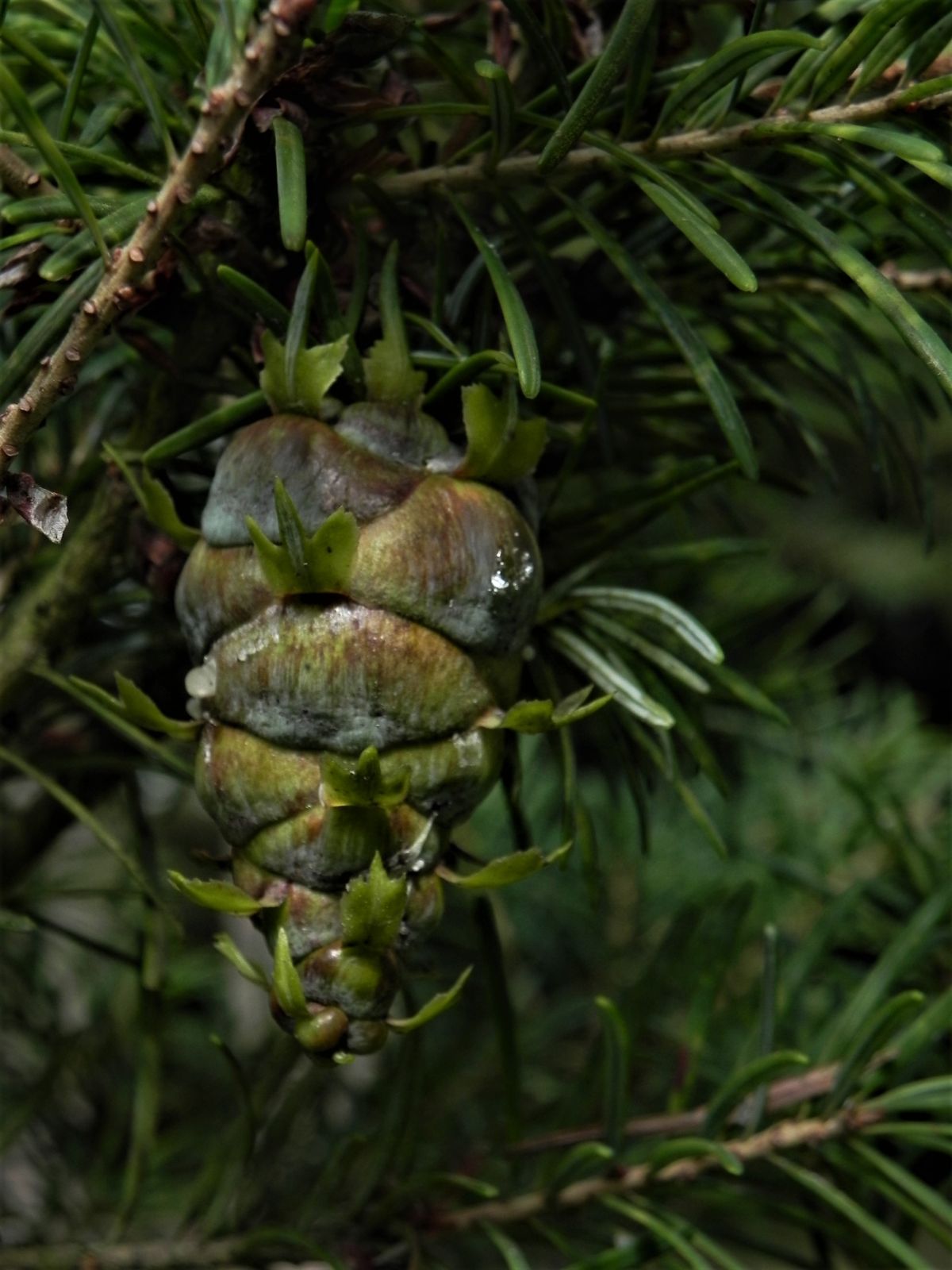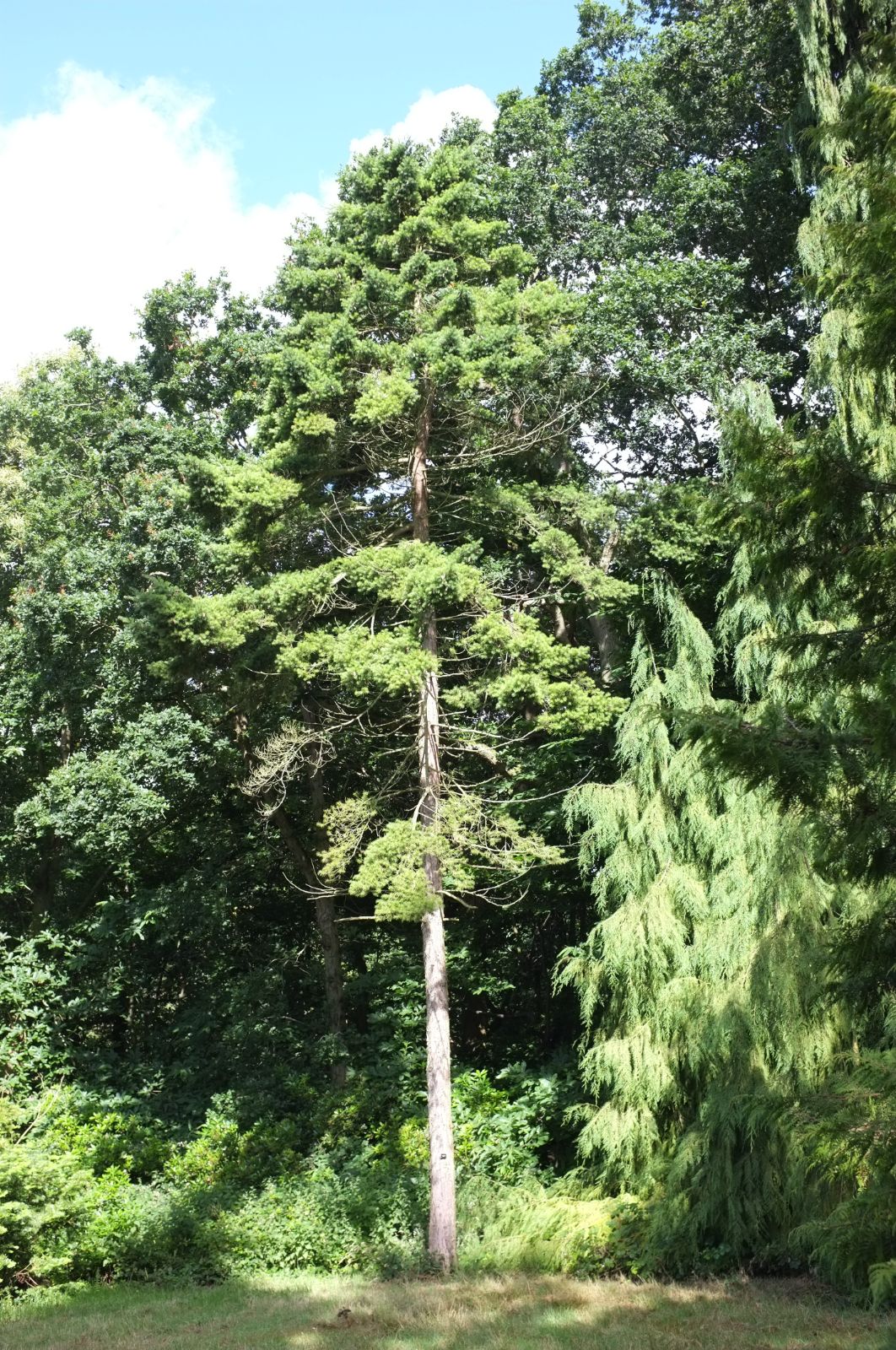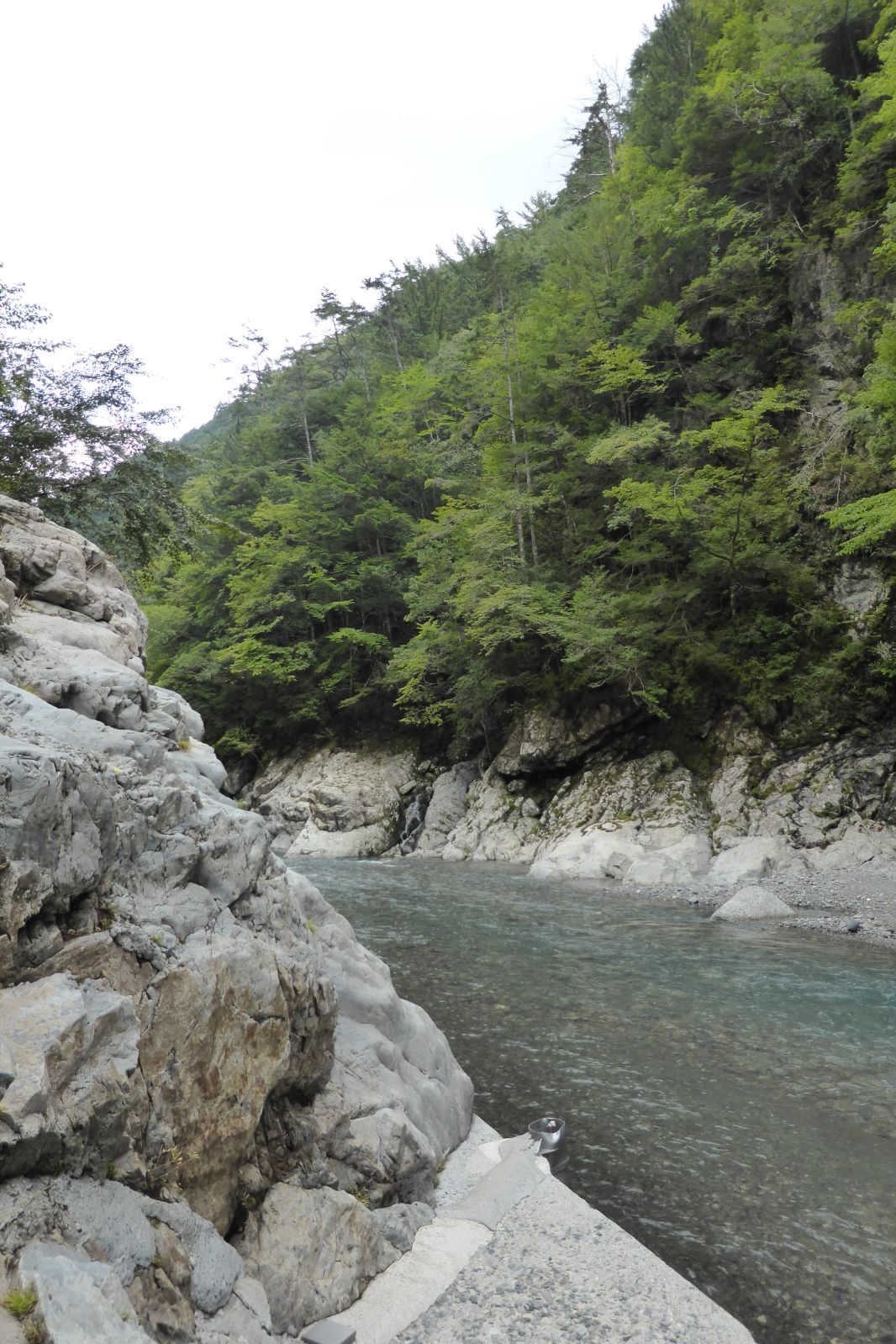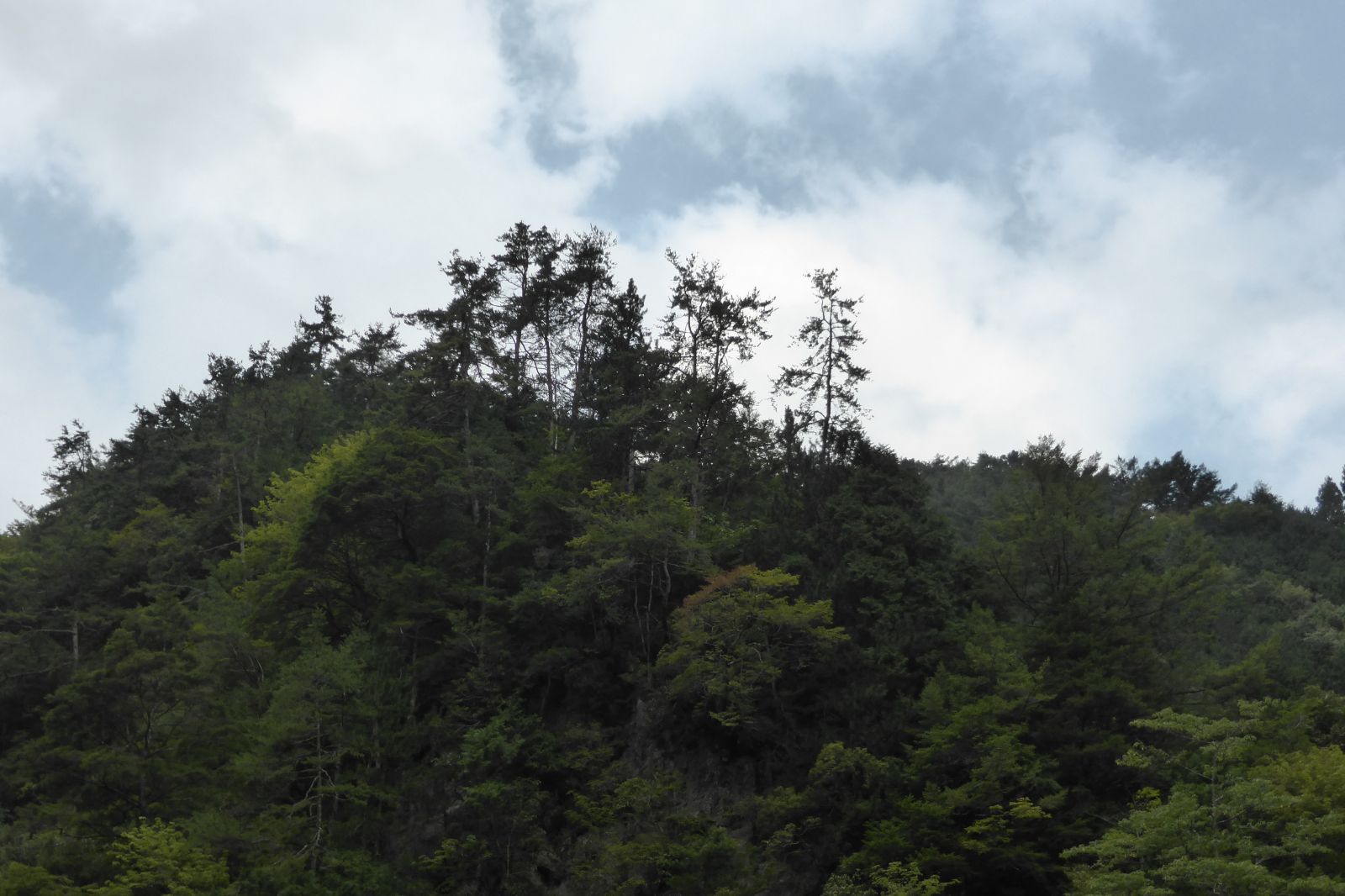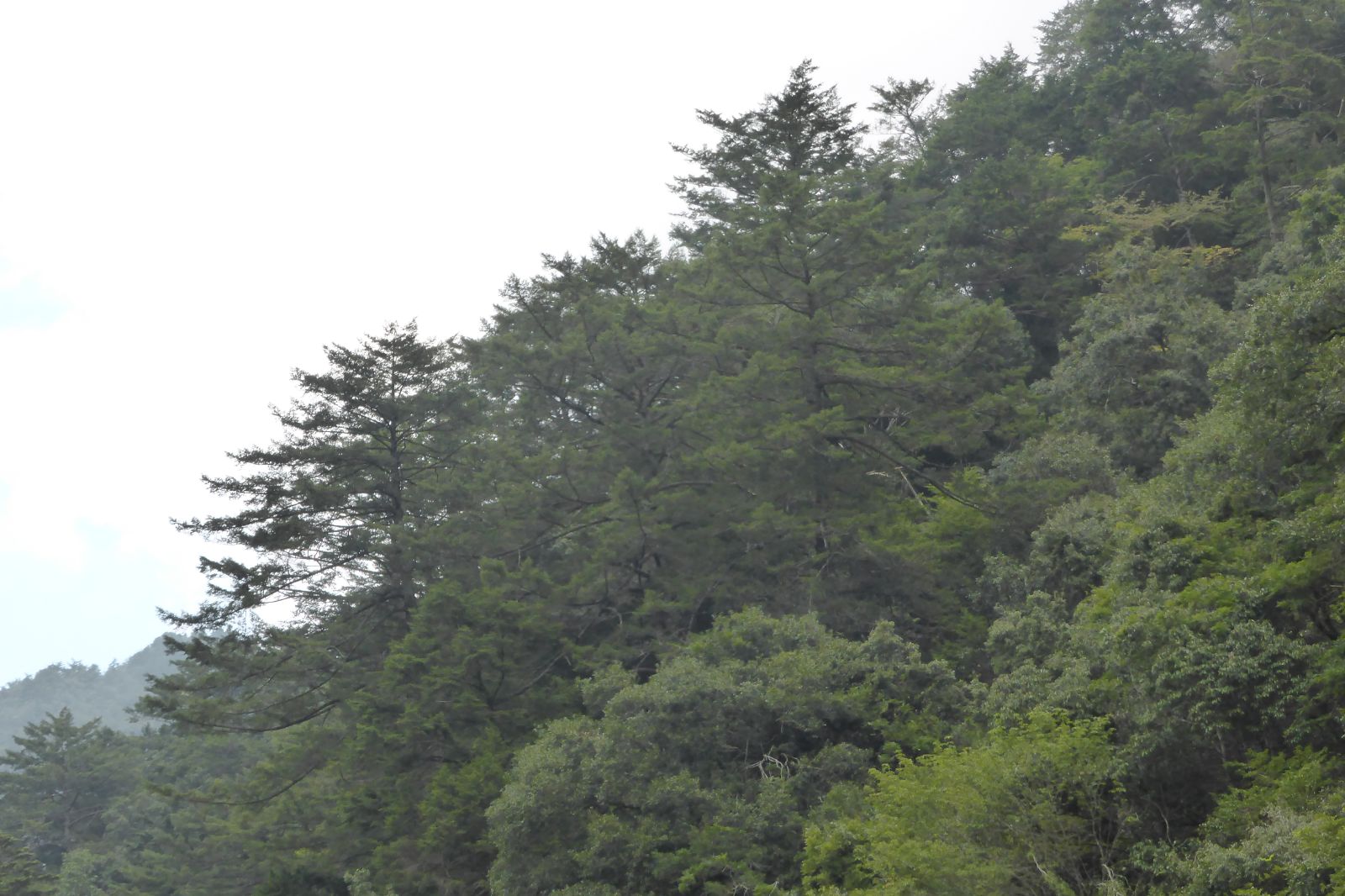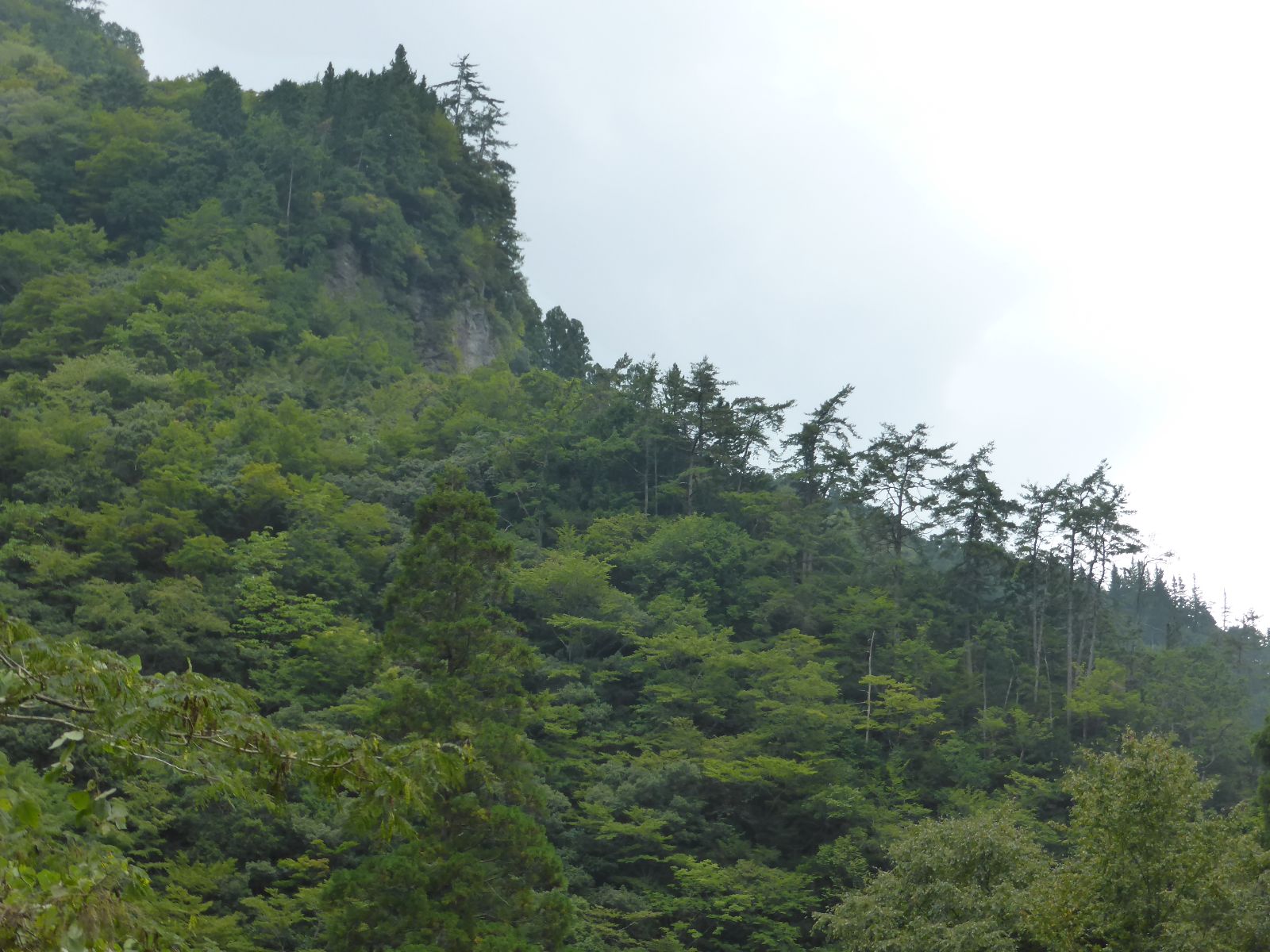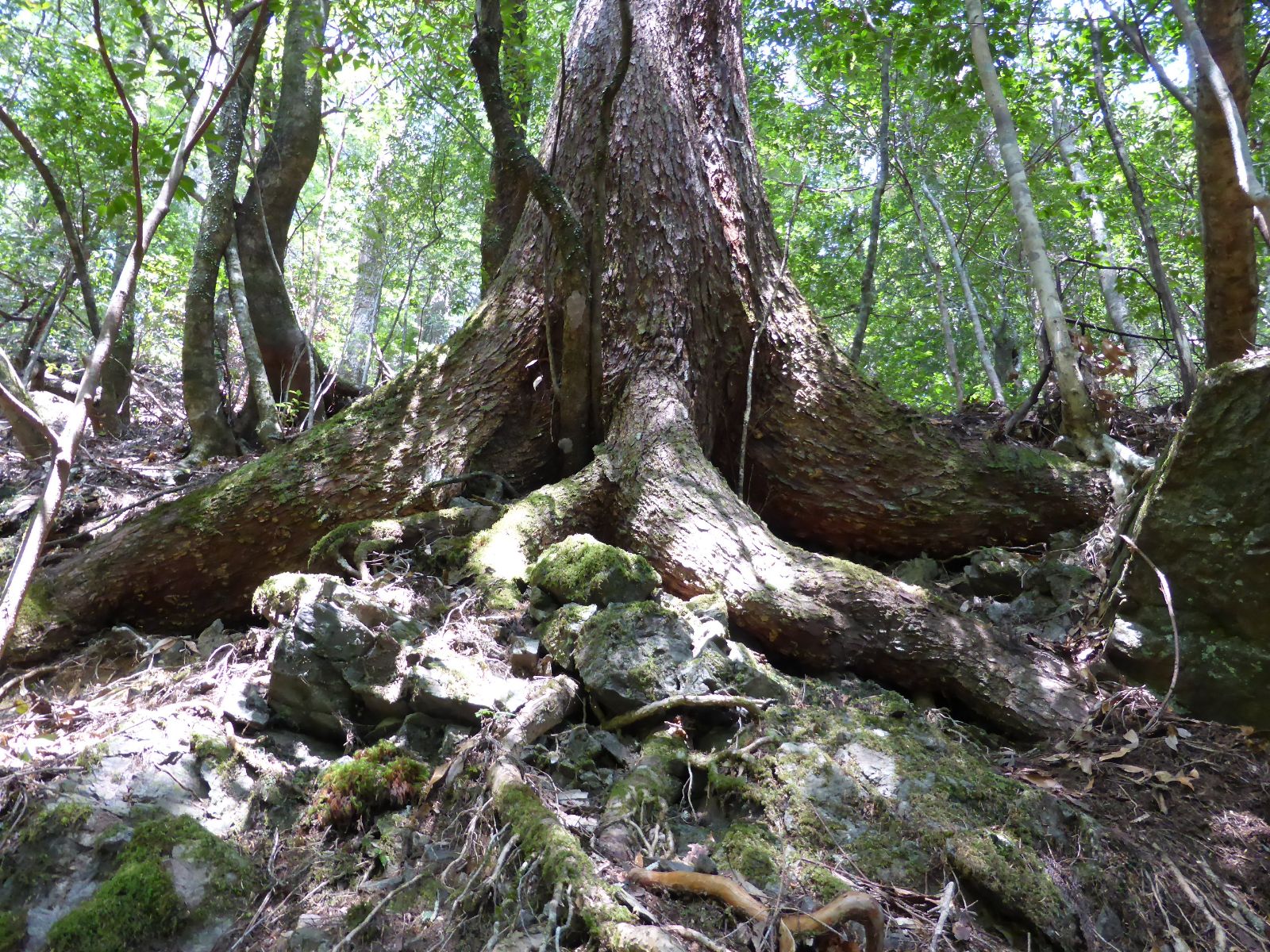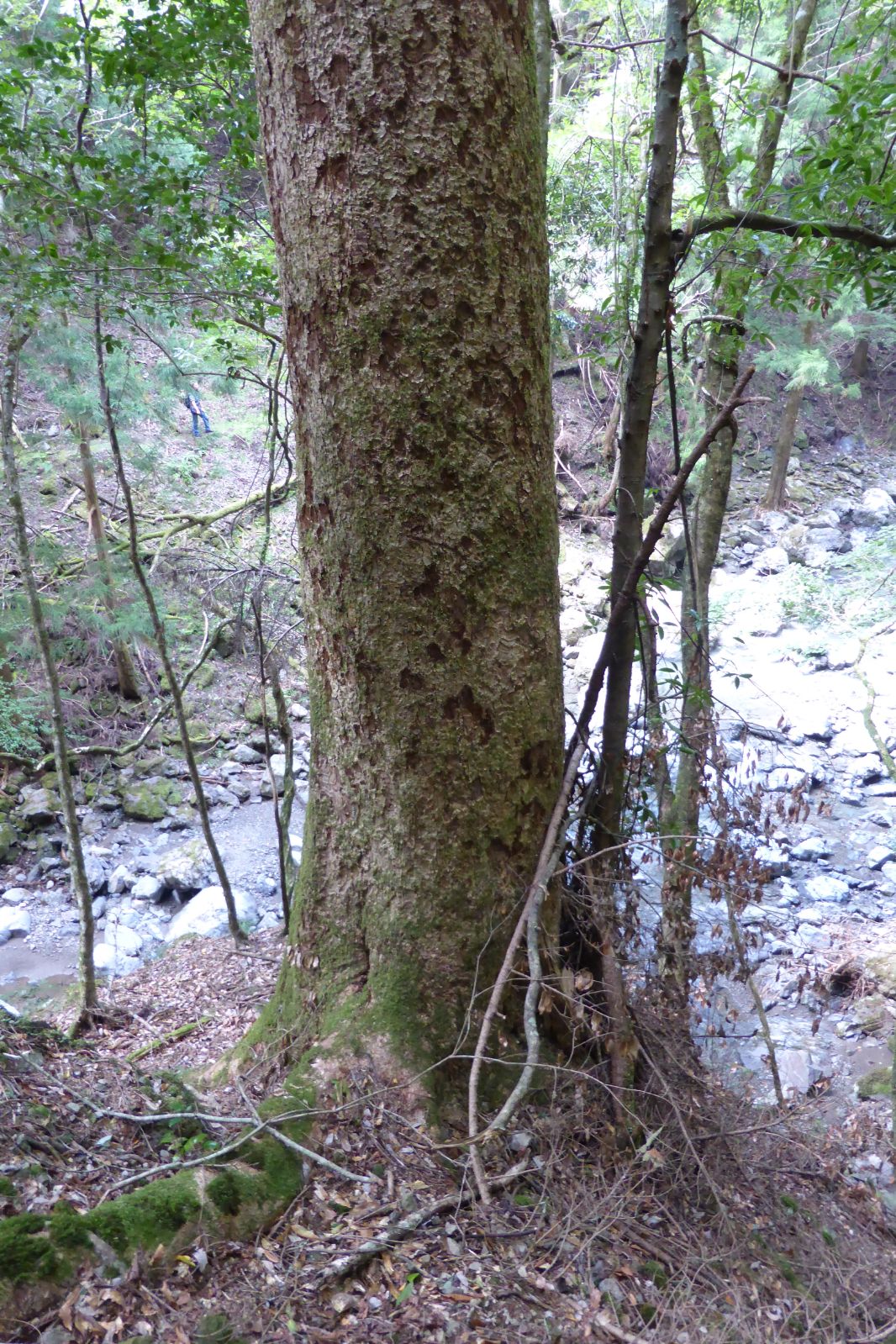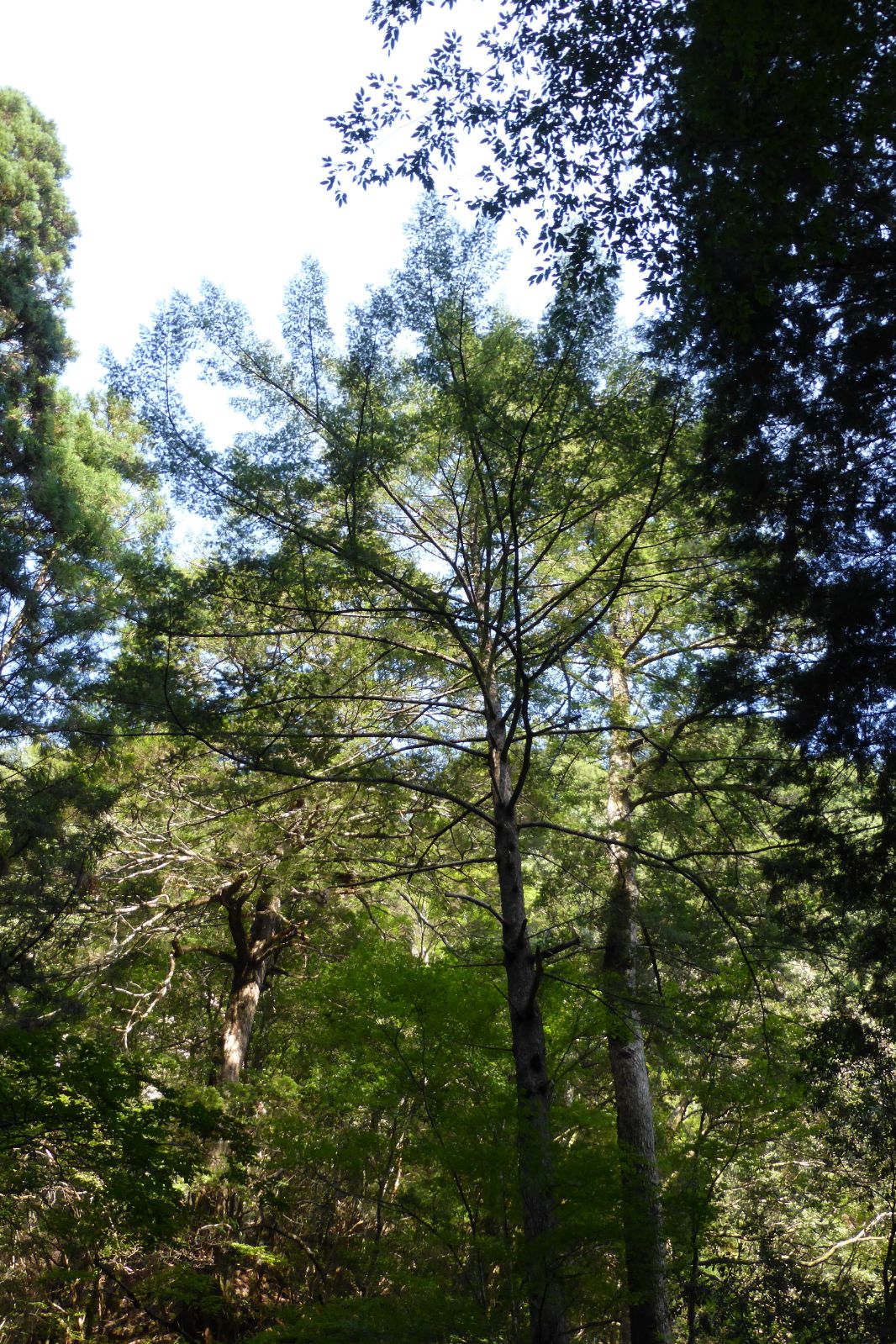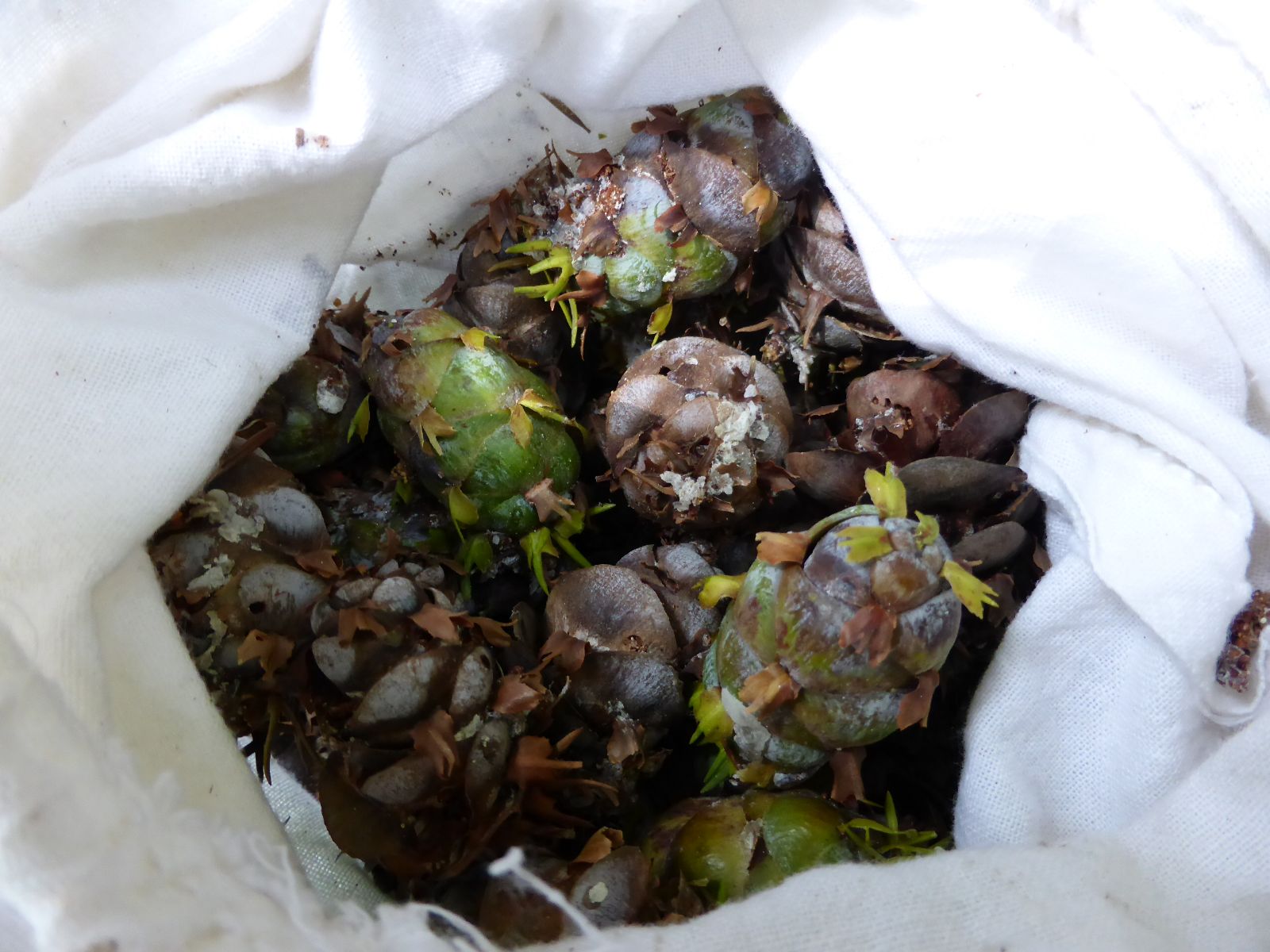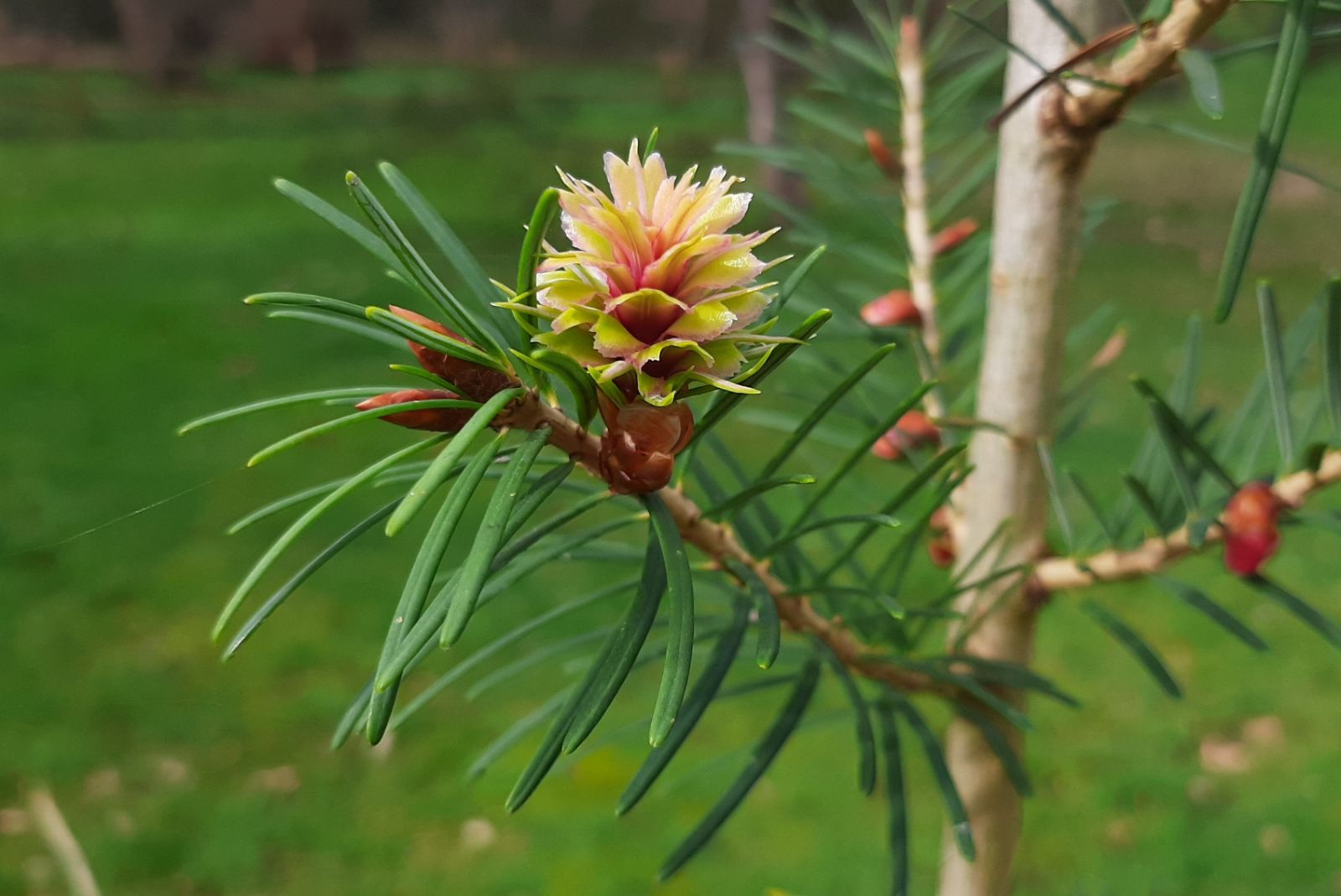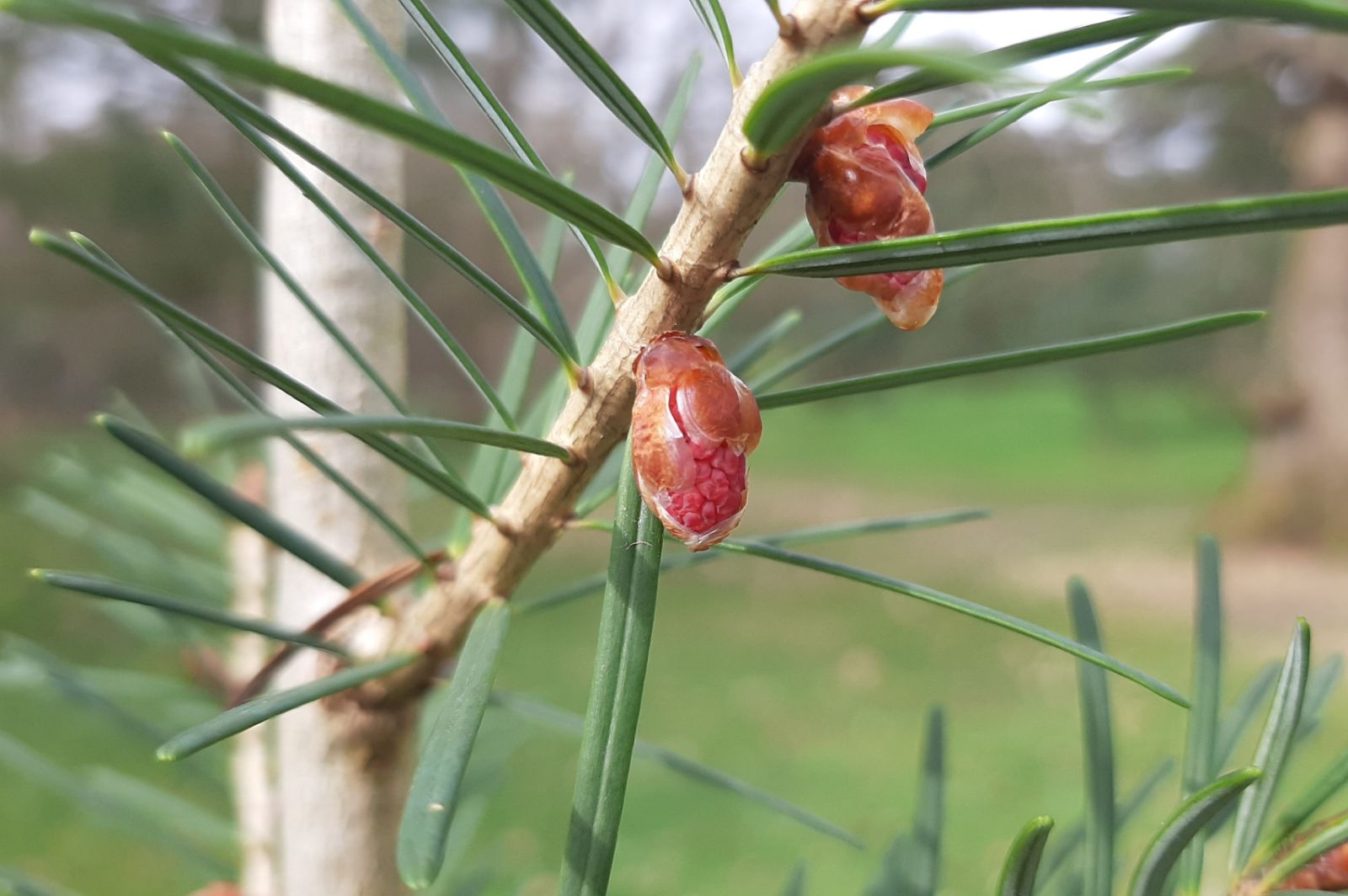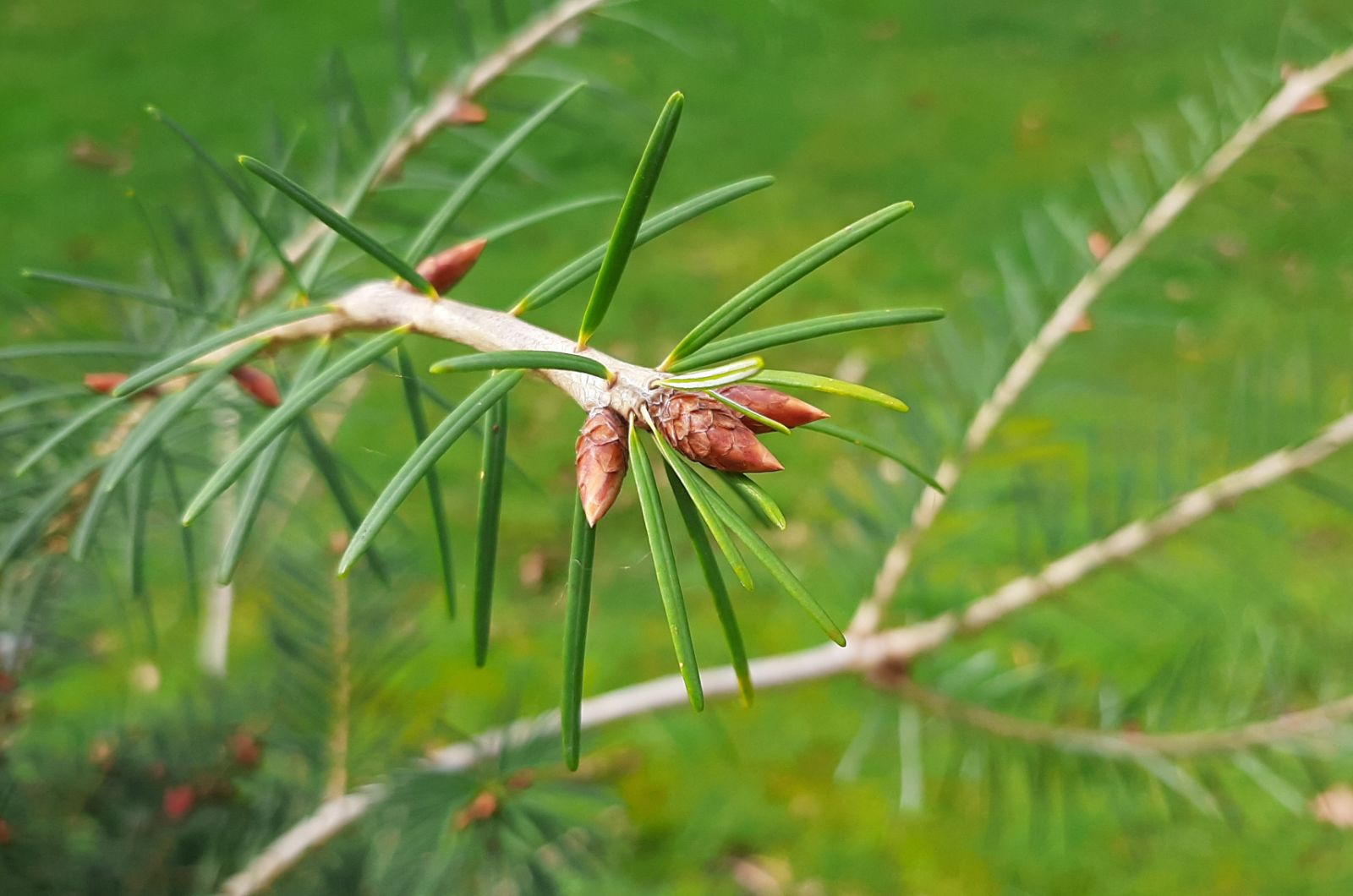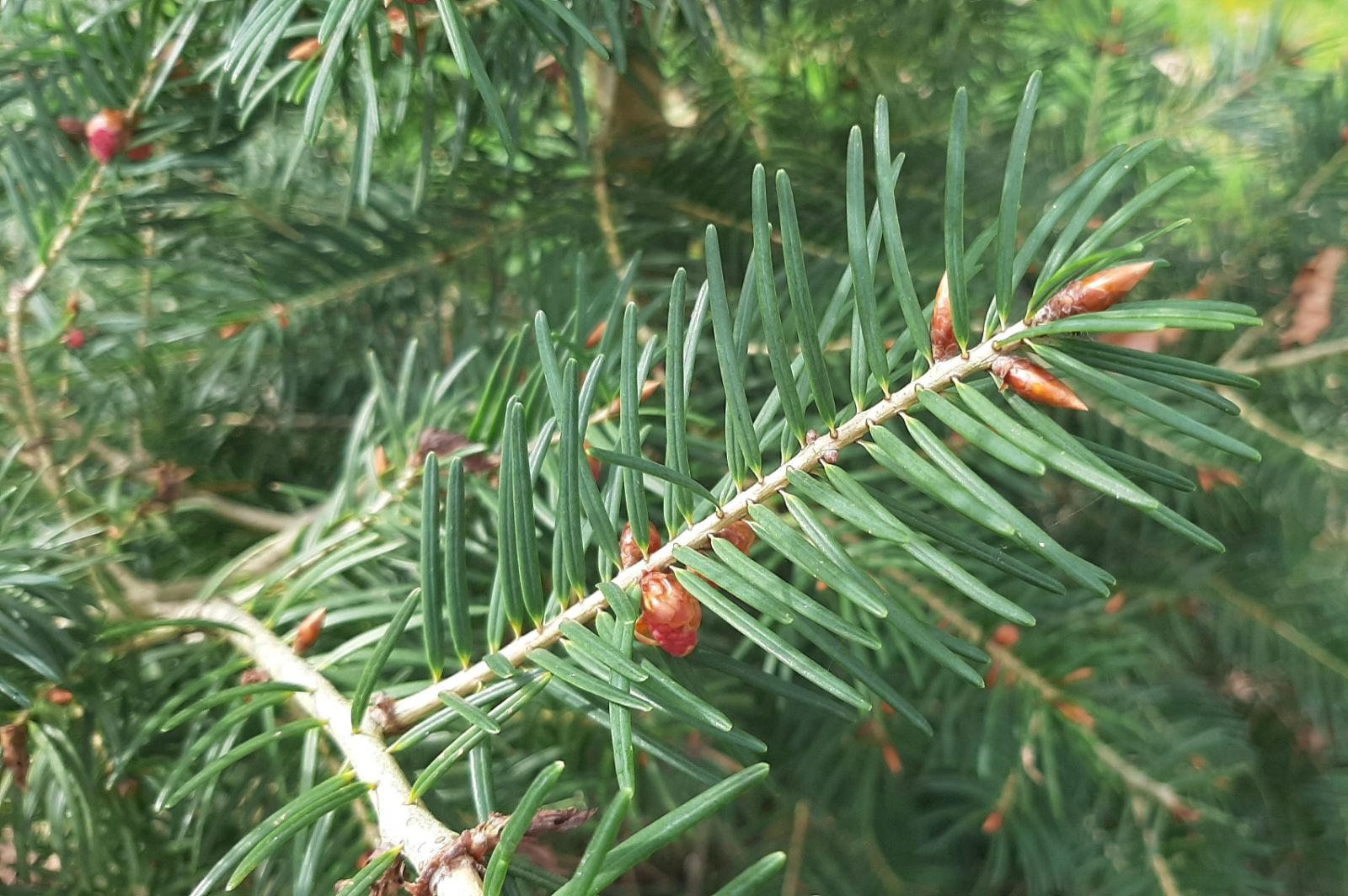Pseudotsuga japonica
Sponsor
Kindly sponsored by
Dansk Dendrologisk Forening, The Danish Dendrology Society
Credits
Tom Christian & Aljos Farjon (2023)
Recommended citation
Christian, T. & Farjon, A. (2023), 'Pseudotsuga japonica' from the website Trees and Shrubs Online (treesandshrubsonline.
Genus
Common Names
- Japanese Douglas Fir
- トガサワラ (Toga-sawara)
- Goyo-toga
Synonyms
- Tsuga japonica Shiras.
Trees to 25–30(–40) m tall, dbh to 1–1.5 m; trunk usually monopodial, more or less straight. Bark breaking into vertical, flaking plates, in old trees longitudinally fissured, grey. Branches spreading out in all directions, crooked; branches of second order slender, spreading horizontally or ascending; crown broad, open, usually domed or flat topped. Branchlets slender, firm, yellowish grey, becoming light greyish brown or grey, glabrous, with small, angular leaf scars. Vegetative buds ovoid to fusiform-conical, acute, 4–6 × 2–3 mm, not resinous; bud scales triangular, older scales with erose margins, shining reddish brown, persisting 1–2 years. Leaves spreading irregularly on both sides of the shoot, or pectinate, especially on shaded vegetative shoots, (1.5–)2–3 cm long, 1.5–2 mm wide, slightly twisted or curved at base, linear, straight, longitudinally grooved above, flattened, (slightly) emarginate at apex; stomata in two bands separated by a midrib below (abaxial side); leaf colour (light) green above, two whitish stomatal bands below. Pollen cones 1–1.5 cm long, yellowish brown. Seed cones on 1–2 cm long, curved peduncles, ovoid or ovoid-conical, tapering towards apex when closed, 3.5–5.5(–6) cm long, 2–3.5(–4) cm wide with opened scales, pale purplish or purplish brown, ripening to dark, dull brown or blackish brown; old cones deciduous after shedding seeds, but often persisting 2–4 years thereafter. Seed scales flabellate to semi-orbicular or sub-reniform, convex, 1.5–2.2 × 2.5–3 cm at mid-cone; upper margin entire, incurved; base shortly narrowed. Bracts oblong-spathulate, with 3-lobed apex, central cusp longer and narrower than lateral lobes, 1.5–2 cm long, widest (–8 mm) near apex, exserted, recurved or reflexed. Seeds ovoid to more or less triangular, 4 × 7 mm, pale brown, with dark spots; wings ovate, 4–10 mm long, light or dark brown. (Farjon 2017; Ohwi 1965).
Distribution Japan Western and Southern Honshu (Chūgoku region and Kii Peninsula respectively), Shikoku.
Habitat Rare and scattered in sheltered valleys and steep ravines, growing on old volcanic rock at (400–)500–900(–1100) m asl. The climate is warm temperate, moist, with annual precipitation of 1000–2000 mm. It is locally a (major) constituent of mixed conifer-broad-leaved forests, with Tsuga sieboldii usually as the dominant species. Other conifers include Abies firma, Chamaecyparis obtusa, Torreya nucifera and Cryptomeria japonica, broad-leaved trees include e.g. Quercus salicina, Q. sessilifolia, Cleyera japonica, and Illicium religiosum. Common shrubs include Eurya japonica, Pieris japonica, Rhododendron serpyllifolium and Camellia japonica.
USDA Hardiness Zone 5
RHS Hardiness Rating H5
Conservation status Endangered (EN)
Pseudotsuga japonica was, for a time, the only Asian Douglas Fir to be established in western cultivation (Bean 1976). The eminent Japanese botanist Dr. Homi Shirasawa discovered it near Yoshino on Honshu’s Kii Peninsula in July 1893 and it was introduced to cultivation shortly afterward – it was raised from seed at the Arnold Arboretum in spring 1899 but the resulting plants perished; young plants Beissner reported from Ansorge’s nursery at Flottbeck and in the Botanic Garden in Hamburg in 1902 may have been traceable to the same collection (Wilson 1916). By 1909 Elwes & Henry (v. 4, 1909) had only seen preserved material of P. japonica, but it would be introduced to Britain the same year by Capt. Clinton-Baker who ‘obtained four plants…from Rovelli of Pallanza; also six from the Yokohama Nursery Co., all raised from seed. These are thriving here [Bayfordbury, Hertfordshire, UK], and in other places where they have been distributed by me’ (Clinton-Baker 1911).
According to Bean, Clinton-Baker sent additional seed from Japan in 1910 (Bean 1976), but Clinton-Baker makes no reference of this in his 1911 letter to The Gardeners’ Chronicle (Clinton-Baker 1911) and this may be an error or misunderstanding on Bean’s part. The few young plants distributed by Clinton-Baker were probably the source of the handful of specimens Bean later cited, including: ‘examples 30 ft [c. 9 m] or slightly higher in the National Pinetum at Bedgebury, Kent; and at Wakehurst Place, Leonardslee, and Borde Hill, Sussex’ (Bean 1976). A suspiciously large tree at Powerscourt, also cited by Bean in an earlier edition, later turned out to be Pseudotsuga menziesii (Bean 1976). An extant, presumably original tree at Borde Hill was 15 m × 25 cm dbh in 2015; a 1932 planting at Bedgebury was 9 m × 30 cm in 2015 and a neighbouring tree planted in 1988 was 9 m × 21 cm dbh; the best now is at Sotterley, Suffolk, 17 m × 33 cm dbh in 2016 from a 1936 planting (Tree Register 2023).
Records of Pseudotsuga japonica from North America are scant. Multiple introductions to the Arnold Arboretum have all perished, save for the most recent, of seed collected on Honshu in 2018 under PCC18-HON-046 (Arnold Arboretum 2023). A recent introduction to Britain, EIKJE 15, gathered on the Kii Peninsula in 2013, has been planted out at Benmore Botanic Garden, Argyll, and at Bedgebury and Kew. One planted at Kew in 2018 was 2.7 m in 2022 and produced female cones for the first time in early 2023 (Tree Register 2023; K. Martin pers. comm. 2023) when another at Bedgebury was c. 1.8 m and growing well; the trees at Benmore have not performed so well in the cool, wet climate, presumably for want of meaningful summer heat (TC pers. obs.). If ever further material is available for testing in British collections those in the south should be favoured.
The Kii Peninsula is one of the major areas of distribution for Pseudotsuga japonica, the other being eastern Shikoku. Tom Christian, one of the authors of this work, was part of the EIKJE collecting team which targeted the species there in 2013, and which included trained climbers from Edinburgh and Kew who were able to climb trees to collect cones. Despite the oft-cited maximum dimensions of 30 m × 1 m dbh, the team recorded trees to 40 m × 1.5 m dbh in the deep, sheltered conditions of the Myojin valley, where large Pseudotsuga were restricted to thin soils in rocky places on the very steepest slopes. Due to the height of the trees and the deep, steep sided nature of the valley, it was impossible to tell in advance of climbing whether a tree even had any cones. Over the course of several hours’ fieldwork four trees were climbed but only one turned out to have cones with viable seed (EIKJE 15) and although these yielded several dozen good seeds, only a dozen or so eventually germinated (TC pers. obs.).

